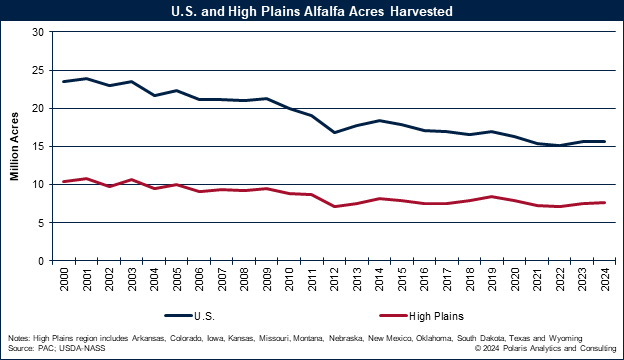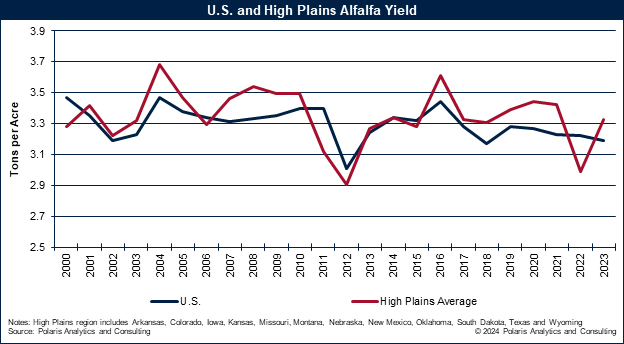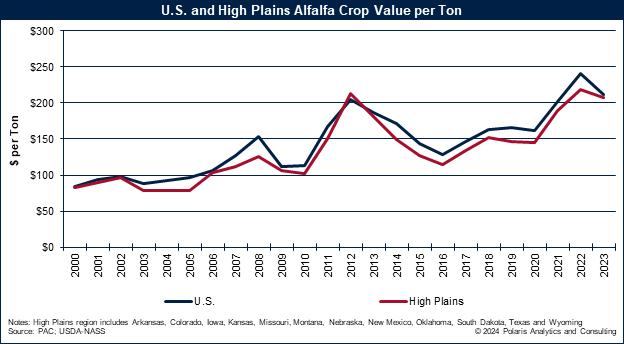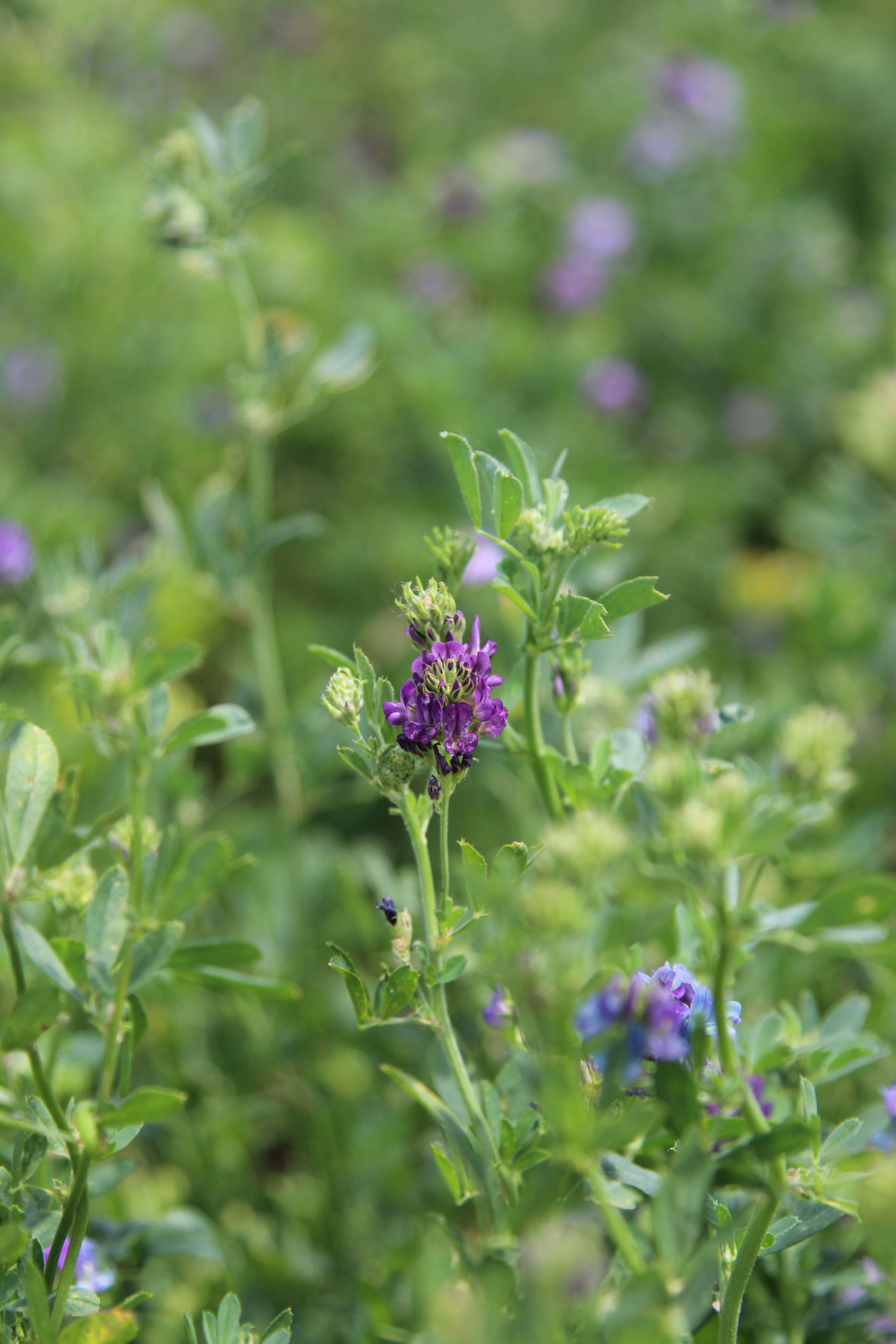Alfalfa is an important and valuable forage crop with high protein content as feed for dairy cows, beef cattle, calves and other livestock. It is highly beneficial to enrich soil with nitrogen and a deep root system. Despite its benefits, the area harvested, its yield and resulting production have been in slow decline.
High Plains Journal hosts Alfalfa U and regularly informs and updates alfalfa prices and crop conditions on its website and in the weekly publication, keeping readers in the know of nearby developments in the alfalfa market. This column looks at the historical acreage, yield, production and crop value trends and patterns to gain insight of what is at the horizon and how it could be illustrative of what might be over the horizon.
Alfalfa production slipping on flat area planted and falling yields
Land planted to alfalfa across the United States for 2024 has been pegged at 15.6 million acres, according to the U.S. Department of Agriculture’s National Agricultural Statistics Service survey of farmers in early June, as reported in the June Acreage report that was released June 28. If realized, plantings will essentially be unchanged from 2023, hovering near the historical low as shown in the following chart. However, since 2000, alfalfa area has shed nearly 10 million acres.
Alfalfa plantings in the High Plains region have been consistently around 7.7 million acres since 2012 and are expected to total 7.6 million for 2024, which would be an increase of 1.4% from 2023. Alfalfa area across the High Plains averaged about 10 million acres from 2000 through 2005 before steadily declining to its current level.
The area planted to alfalfa in the High Plains region represents nearly one-half of the U.S. total. Across the region, Montana and South Dakota represent more than 45% of the area planted to alfalfa.

Alfalfa yield across the U.S. varies from one year to the next, dropping as much as 11.5% during the 2012 drought year and 7.6% in the rebound year of 2013. However, alfalfa yield has been trending lower since at least 2000. The U.S. alfalfa yield was 3.2 tons per acre during 2023.

In the Northern Plains, alfalfa yield has trended lower since 2000. For 2023, the alfalfa yield across the Northern Plains was 3.3 tons per acre. Alfalfa yield is shown in the accompanying chart.
With area shrinking and yield dragging lower, alfalfa production has been falling. U.S. alfalfa production exceeded 80 million tons in 2000 and has trended lower to 50 million tons since 2021. High Plains alfalfa production has dropped from 30 million tons to around 20 million since 2021.
Alfalfa crop value has been encouraging
Despite falling area and yields, resulting in lower production, alfalfa’s bright spot has been its improved value. During 2022, alfalfa values peaked at $240 per ton, using USDA-NASS data. For 2023, the value fell 12% to $212 per ton.
Alfalfa values across the High Plains generally lag the national level, averaging $207 per ton during 2023, a drop of 5.6% from the record level during 2022. Alfalfa crop values are shown in the following figure.

Given the results of the USDA-NASS survey of farmers who expect to harvest alfalfa from 15.6 million acres during 2024 and using a trend yield of 3.2 tons per acre, production will increase 1% to 50.4 million tons. For the High Plains, production could increase 1.1% to 21.5 million tons.
The high value reported for alfalfa is needed to offset higher costs farmers have experienced with fuel, irrigation, inputs (seed, fertilizer and pest control), transportation and higher interest rates. While some of these costs have eased, many remain at elevated levels, and the impact hits the bottom line as higher costs have a compounding, accumulative effect.
Absorbing costs over the long run impacts what farmers plant and how well they treat what they plant. With plentiful supplies of corn and other feed ingredients available to the market, livestock producers may forgo using alfalfa, substituting with other feed components. As substitution ensues and less alfalfa is consumed, the crop value could retreat further.
Despite changing alfalfa crop patterns, alfalfa remains an important crop for agriculture
Alfalfa is a valuable livestock feed for dairy cows, beef cattle, calves and other livestock. Alfalfa’s attributes are beneficial to the soil and crops that follow where it was planted and harvested. Production may have slipped, but alfalfa’s value has held ground and will continue to be an important and meaningful crop across the High Plains.
Ken Eriksen can be reached at [email protected].




